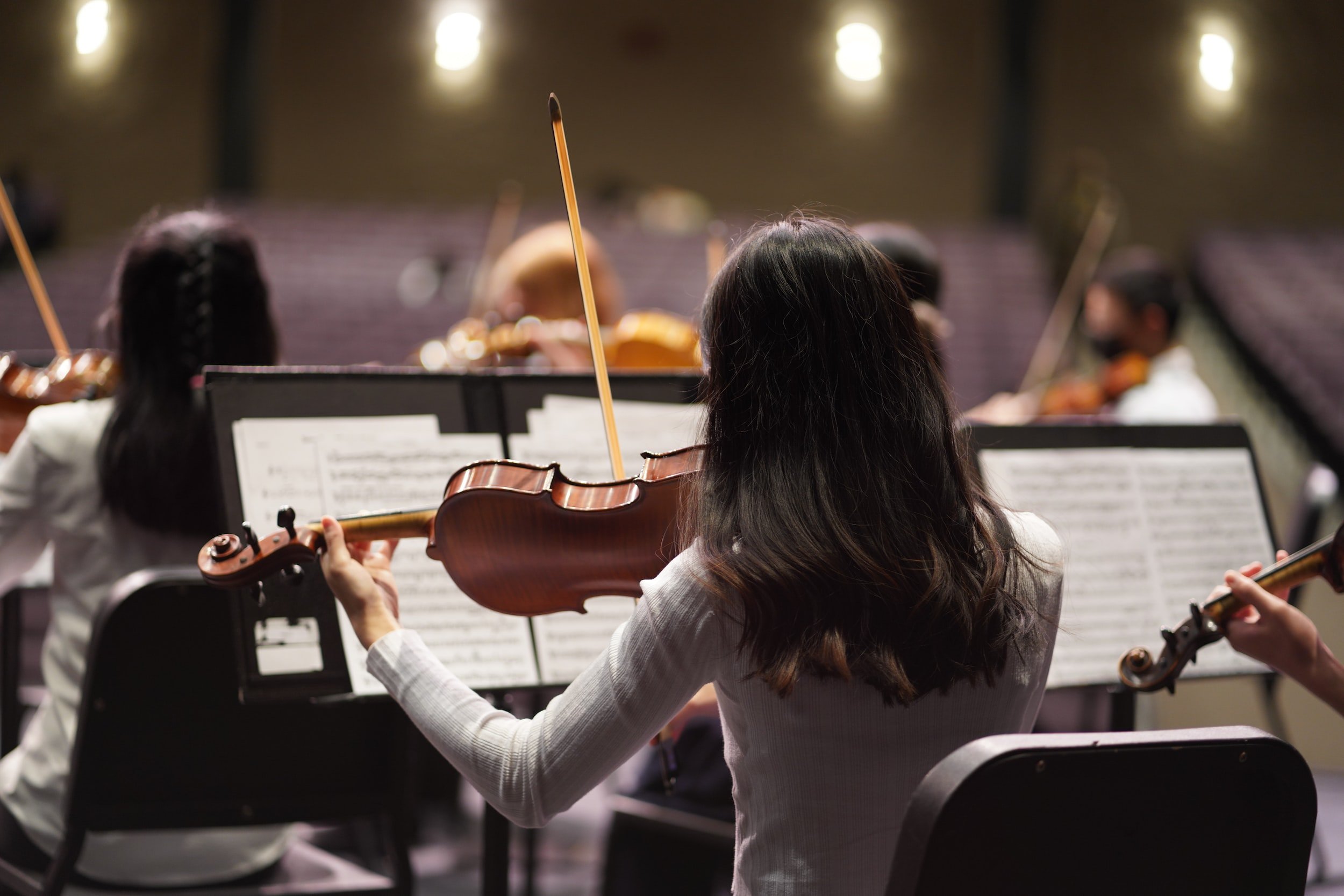Staccato Spotlight: ArrangeMe Music Educators
Last month, we asked music educators to tell us how they use ArrangeMe with their students. We received so many fantastic responses, we decided to feature music educators who represented a variety of disciplines in this month’s Staccato Spotlight!
Allison L. from Howell, Michigan is an elementary music teacher and middle school band director. She arranges radio hits like “Good 4 U” and “Pinball Wizard” for high school marching bands to purchase and use for their shows.
Laura Q. works with El Sistema as a middle school and high school orchestra director in Caracas, Venezuela and began her self-publishing journey as an SMP Press user where her children’s symphony version of Handel's “Hallelujah Chorus” first took off.
James D. is a middle school and high school band director in Stillwater, Minnesota and is currently testing an idea to use lead sheets with his concert bands to teach music theory.
Elizabeth B. is a piano and violin instructor from Telford, England. She’s excited about her recent project, “The English Garden Collection.”
Judi V. from Ankeny, Iowa is a piano instructor. Her students compose their own original piano pieces using NoteFlight student accounts and told us, “My students who compose in NoteFlight grasp music theory more quickly than those who don’t!”
“Arrange the music your students are asking for, music they can’t walk by their instrument without stopping to play!”
What is your arranging process?
Laura Q.: I think about what a specific ensemble needs to achieve technically, then how to make it appealing to the students. This way, students learn basic technique and develop musically while playing music that suits the skills they have.
Allison L.: As a marching band arranger, it's important to select music that the students are excited to play and the audience will enjoy. We want to delay that trip to the concession stand at half time! As an educator, I want the music that we play to be accessible for my students, but also challenge them to grow as young musicians. I take care to write low brass parts that keep the students engaged, while making sure that the 1st trumpets aren't spending too much time above the staff. I often feature the woodwinds during part of the song so that they are not just doubling the brass all the time. I usually finish each tune with a strong chorus that has an original countermelody to add a personal touch. I love a soaring alto/mello line!
Elizabeth B.: Generally, the arrangements I make are to simplify popular pieces. I have many students who are not able to play the originals. When writing for piano, I find that as long as you have the melody and bass line, it will work as a piece of music. I like to make the analogy of a sandwich to my students: We can survive on bread and butter, and anything in the middle is nice to have and will certainly be tasty. So in my arrangements, I take out the difficult 'tasty' bit. Often the student will then strive to play the full version later on.
“It’s important to define what the arrangement is trying to do. Is it trying to recreate the feeling of the original? Does it need to motivate students by giving everyone a shot at the melody?”
What has been your greatest ArrangeMe success so far?
James D.: My favorite project published via ArrangeMe is a collection of fundamental exercises and warmups that can be played with pop recordings. It was a lot of work, it was a lot of fun testing with students, and it turned out well enough that my own students request using it often.
Judi V.: The way my students engage! They are excited to see what new music I’m writing or arranging, they come in every week asking what I’ve done. They love seeing my music on the website. And many have begun composing and arranging themselves, following my lead. It’s a great learning opportunity for them. Another unexpected thrill has been hearing pianists all over the world playing and posting my arrangements and original music. And great feedback from other piano teachers who find these arrangements useful in their studios. I’m very proud of my Yes! You Can! Arrangements -- multi-leveled arrangements that inspire students as they level up their playing skills and provide multi-leveled group playing opportunities.
What is your advice to composers and arrangers when writing for students?
James D.: The biggest help to me in writing for students was getting experience playing all the band instruments. I’m very thankful for one of my cooperating teachers who showed me the importance of this! I love finding things that are fun to play for each instrument, and it helps to know what is challenging to play for each instrument as well.
Elizabeth B.: If you are making an arrangement for instruments that you are unfamiliar with, try asking musical friends about playability. A Google search (and indeed most notation software) will give advice about an instrument's range, but get to know how it 'plays'. For example the most basic key for piano is C major, but for a violinist C is a hard key, into early intermediate level. Beginner violin music is G, D and A major! So don't just copy that piano melody in C. Transpose it! Just a few clicks in your software.
Laura Q.: Take into consideration important aspects like technical goals (pizzicato, bowing, tonguing, articulation, drum strokes, etc.), the group's learning speed, and which section is weaker or stronger, but always by making the music accessible so students can feel motivated and happy. And, for us teachers, to make the work pleasant! Students are eager to play fast-fast-fast! Short pieces are excellent to work on a short period, and also enrich the ensemble's repertoire by having a varied program to present. Motivated students show outstanding performing results.
Allison L.: Know your students. What do they want to play, and what will the audience enjoy? Composing and arranging music for your own students allows you to tailor the music to highlight their strengths, challenge them to grow in musicianship, and motivate them through music that makes a personal connection in some way.
Judi V.: Arrange the music your students are asking for, music they can’t walk by the piano (or their instrument) without stopping to play! Be open to new genres. Formatting matters! Make your music look good, and easy to read. Have courage and try!




